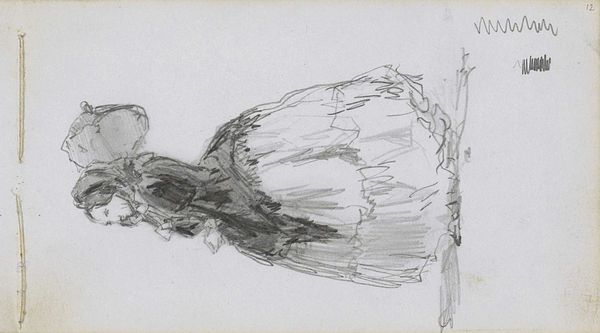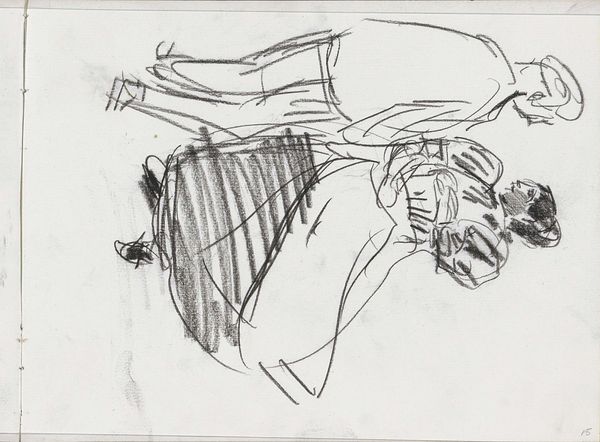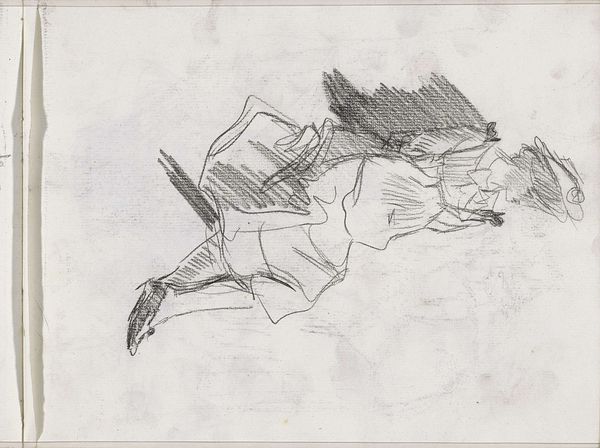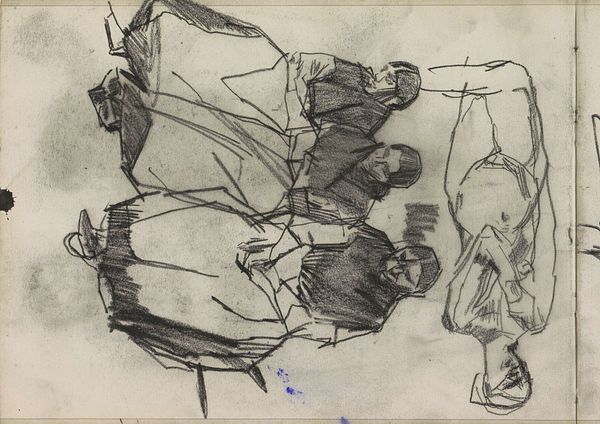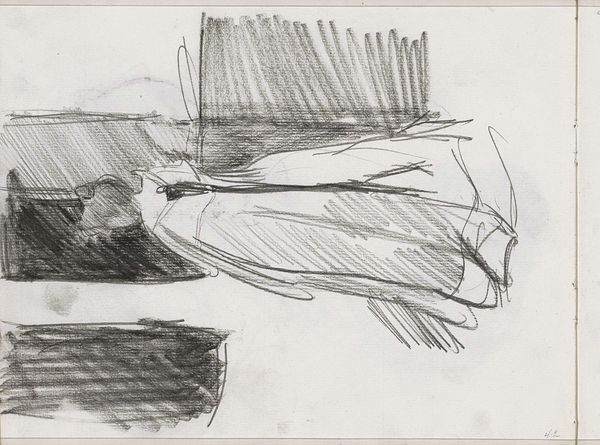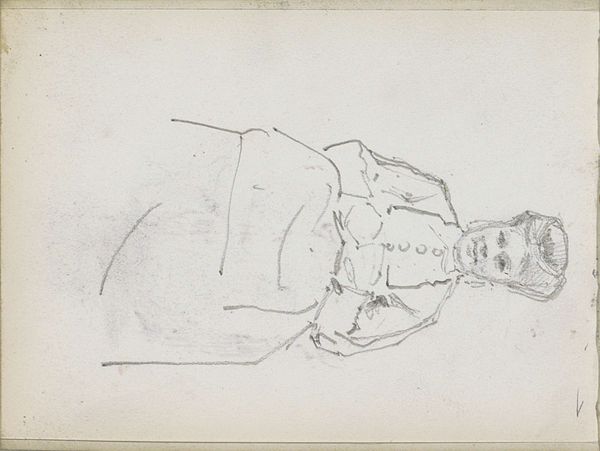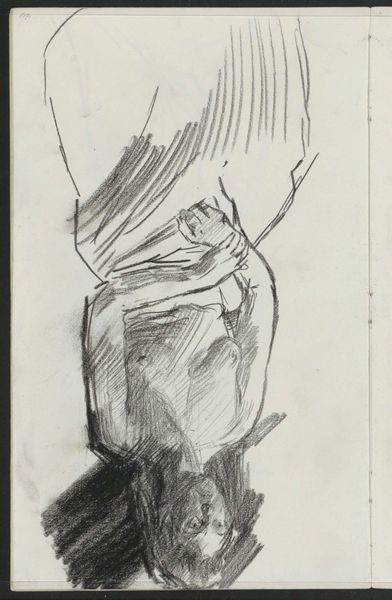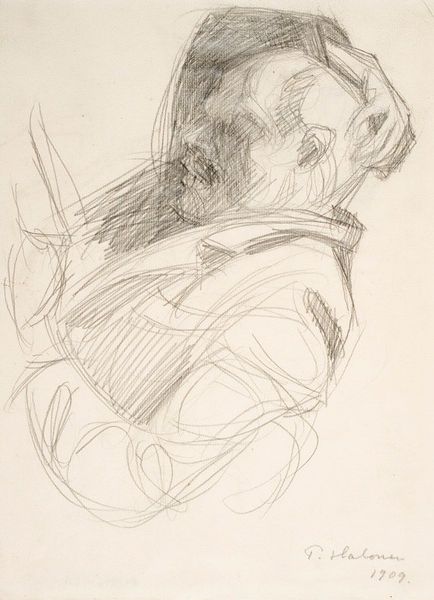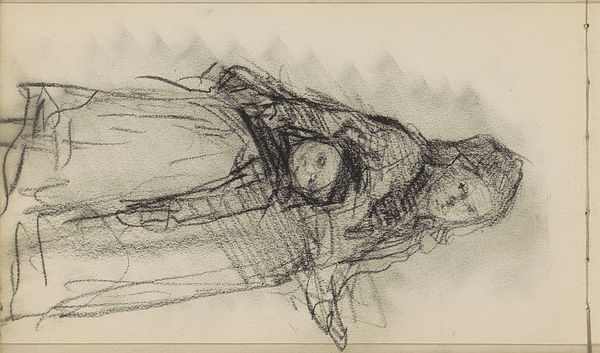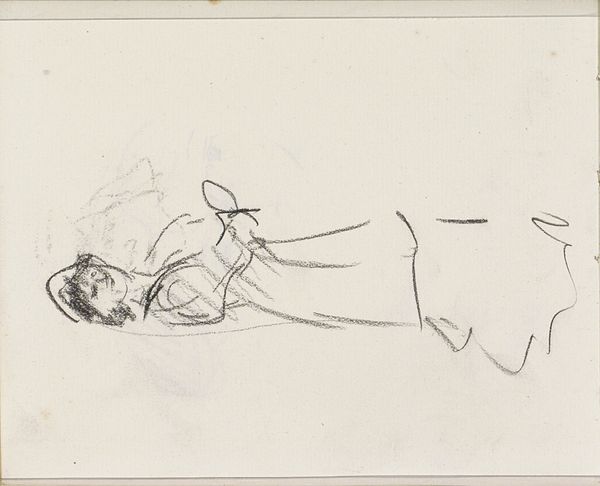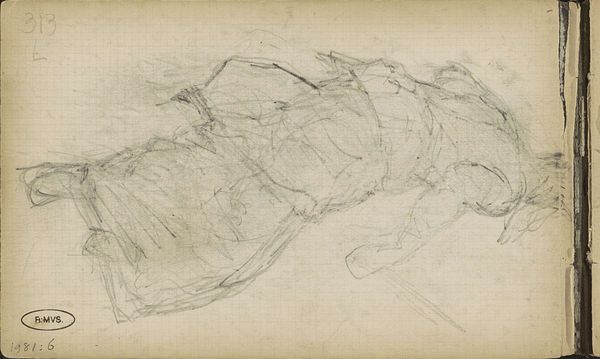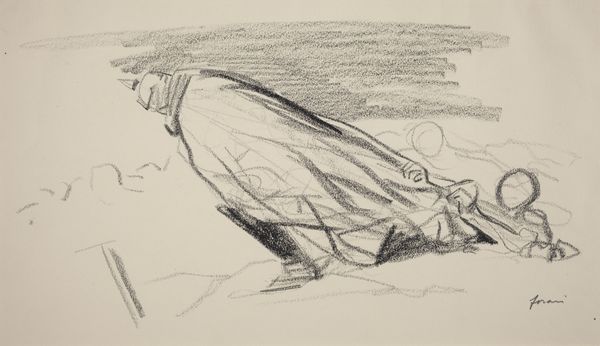
Vrouw met een parasol in een lange jurk en mantel 1834 - 1903
0:00
0:00
johanhendrikweissenbruch
Rijksmuseum
Copyright: Rijks Museum: Open Domain
Curator: Here we have Johan Hendrik Weissenbruch’s “Vrouw met een parasol in een lange jurk en mantel," or "Woman with a parasol in a long dress and coat." This piece, made with pencil on paper, probably comes from sometime between 1834 and 1903. Editor: The immediate impression is almost ephemeral. The lines are so light and swift; it feels like a captured moment, quickly jotted down. Curator: It does, doesn’t it? Considering it through the lens of art’s public role, it's fascinating to think about what Weissenbruch was aiming for. Was it simply a study, or was there an intention for it to be something more? This sketch opens avenues to contemplate women's positions during this era, considering their agency. Editor: Yes, situating this work within the narrative of women's representation, there's something quietly powerful about it. It deviates from grand portraits often commissioned; the informality subverts typical power dynamics. It suggests a more personal observation. Is it, perhaps, an ode to fleeting moments of female self-possession in an era defined by constraints? Curator: That's a key point – it’s in the Rijksmuseum collection. What does it mean for a work with such unassuming means and subject to enter into this institution? Does it point to the shifts within art and the display apparatus or question what makes a work public worthy? The choice of medium too invites questions: pencil evokes an immediacy contrasting with painting; it allows for both intimate study and potential broader social commentary via accessible modes of reproduction, influencing reception. Editor: I’m glad you bring up the technicality because seeing her rendered in simple pencil lines really brings forth ideas about accessible portraiture versus privileged modes. It highlights art-making as something beyond simply skillful; it becomes a medium reflecting societal positionality, revealing not just individual characteristics, but social attitudes during his moment, revealing perhaps both control and limitations imposed upon its creation through a unique socio-cultural dynamic embedded during that era of the artwork’s production and the subsequent modes used afterwards. Curator: Well, thinking about it has changed how I see the piece now! Editor: Me too. Thank you.
Comments
No comments
Be the first to comment and join the conversation on the ultimate creative platform.
